If you haven’t heard of Pasta e Fagioli, I’m not surprised. If you aren’t Italian-American, you probably haven’t heard of much beyond Minestrone when it comes to Italian soups. My Italian father-in-law used to talk about how much he loved “Pasta Fazool” but I could never find a recipe for it. It wasn’t until I asked him to describe it that he let me in on a secret … pasta fazool is the same thing as pasta e fagioli! It turns out that back in 1927 there was a popular novelty song called “Pastafazool” with the lyric, “don’t be a fool, eat pasta fazool.” This is an American slang term that was developed by immigrants when they wanted a more American-sounding names for traditional menu items.
Pasta e Fagioli is one of those ubiquitous Italian meals that means something different to each person who makes it. Varying from region to region, and household to household, it is one of the basic soups in every Italian cook’s repertoire. An inexpensive peasant soup made to fill your belly with common ingredients. In its simplest form it is beans and pasta cooked in a savory broth made with olive oil, onion, garlic, and fresh herbs. It often has crushed tomatoes in it or maybe even leftover pasta sauce can be used. Usually a vegetarian soup, some meat, especially pancetta or prosciutto may be added for flavor. There are those cooks who, like my father-in-law, like theirs served as a soup with a lot of broth, and then others prefer it to be more like a thick meat sauce with ground beef and pork.
The most common bean used is cannellini or other white bean, although cranberry, borliotti, and kidney beans may be included. If you have the time, start with dry beans and soak them overnight. If you haven’t planned that far ahead, as I seldom do, you can use canned beans for a good substitute. You will always sacrifice texture and some flavor, but the ease of preparation often outweighs the time factor. Using a chicken stock to cook the beans in adds a lot of flavor and protein, as well as adding vitamins and minerals. Serve it with a tossed salad and crusty artisan bread for a healthy meal.
When I am cooking, I often have four or five cookbooks open and am scanning various recipes looking for ideas. I will modify the ingredients based on what I have available in my cupboard and pantry, and what I am in the mood for that day. I seldom make anything the same way twice, but that is part of the fun for me. Thank goodness I have an adventuresome and patient husband, LOL!
In that same spirit, I am including several versions of the same recipe for you to play with. You will see recipes from television cooking hosts Giada De Laurentiis, and Rachel Ray with their Americanized versions passed along from immigrant family members and modified for current ingredients. The trendiest version is from Sara Jenkins of I Coppi restaurant in New York City. Having spent much of her childhood in Tuscany and then working in restaurants in Florence and the United States, Sara brings the homey aromas of the Tuscan hillsides and brilliant pizzas straight from the brick oven to the Lower East Side. Unlike many versions, she purees most of the beans, flavors the soup with a saute of fresh garlic and herbs and finishes it with a drizzle of imported Tuscan estate-bottled extra-virgin olive oil.
For the truest traditional version, I turned to The Silver Spoon cookbook from Phaidon Press. The Bible of Italian cookbooks, it contains over 2000 recipes from all different regions of Italy. It has been a classic in Italy for many years and was finally translated into English for our benefit in 2005. This was a major undertaking because while they maintained the authentic feel of the Italian archetype, they also updated the recipes for today’s methods, measurements and ingredients. It is a beautiful book and actually easy to navigate thanks to a very well written index and color-coded pages. If you want to learn to cook Italian foods, get The Silver Spoon. It will become the most cherished book in your library.
The version of the recipe from The Silver Spoon calls for a pasta named “maltagliati.” Most cooks in America won’t know what this is because it is basically the scraps leftover from making other shapes of pasta. Flat pieces of dough in random, roughly rectangular shapes, they are often used in minestrone soup and pasta e fagioli. An easy replication of this would be coarsely broken pappardelle. You can use whatever pasta you have in the house to make this dish. I prefer a hearty pasta, but feel free to improvise.
I hope you have fun playing with these recipes and come up with a version all your own. If you do, please leave a comment below and let us know about it. I love to hear your success stories!
Mangia!
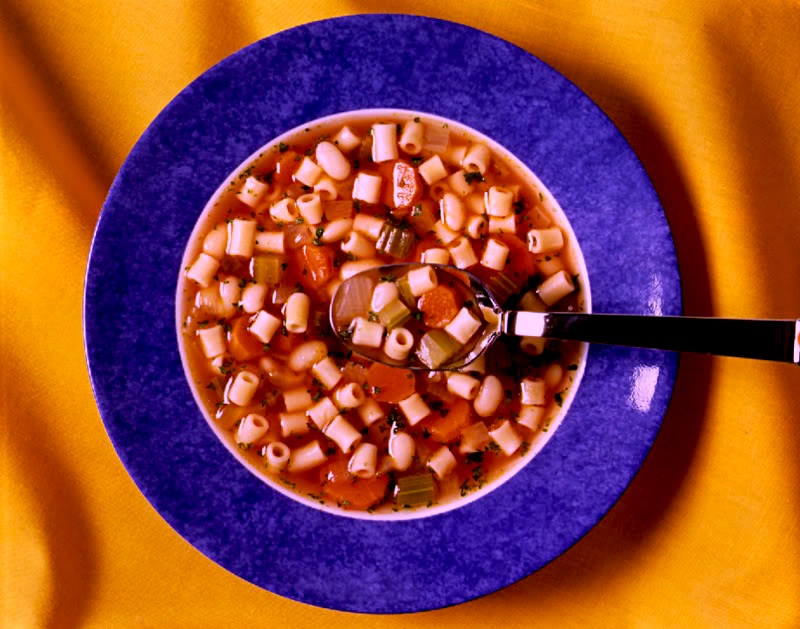

- 2 cups dried white beans, soaked overnight in cold water to cover, and drained
- 3 tbsp olive oil
- 4 sage leaves
- 1 garlic clove, crushed
- 6-1/4 cups water
- 3 tbsp bottled strained tomatoes
- 3/4 cup maltagliati pasta
- Salt and pepper
- Put the beans into a pan, add fresh cold water to cover, and bring to a boil. Lower the heat and simmer for about 2 hours. Transfer half the beans to a food processor and process to a puree.
- Heat the oil in a pan, add the sage leaves and garlic and cook for a few minutes. Pour in the bean puree and water, season with salt and pepper, and stir in the strained tomatoes. Finally, add the whole beans. Bring to a boil, add the pasta and cook for 10 minutes or until al dente, then ladle into a soup tureen. This is excellent served hot, cold, or even warm.
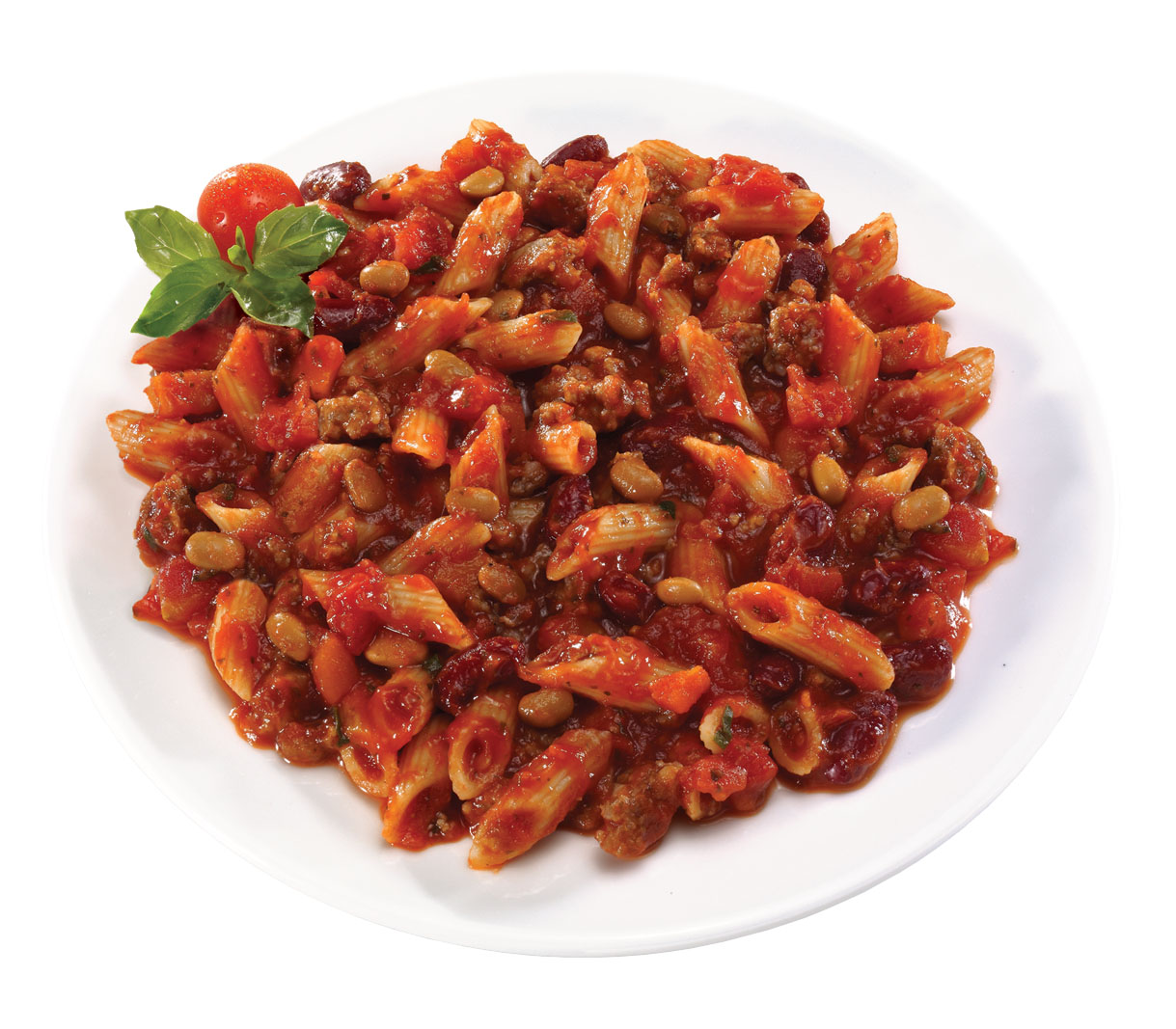

- 2 cups dry cannellini beans
- 5 cloves garlic
- 2 sprigs fresh sage
- 1 sprig rosemary
- 1/4 cup Tuscan extra-virgin olive oil
- 1 tbsp tomato paste
- 3/4 cups chicken stock or water, or as needed
- 1/4 cup puréed tomato sauce
- 1 cup small, dry pasta (such as latini macheroncini or ditalini)
- 2 tsp salt, or to taste
- 15 grinds black pepper, or to taste
- Additional extra-virgin olive oil for garnish
- Rinse and drain the dry beans and place in a large bowl, covered with at least 2 inches of water. Add 3 cloves of garlic and 1 sprig of sage, and allow to soak overnight. Ifyou notice that the water level has fallen below the beans, add more to keep them covered.
- The next day, pour the beans, with the water, sage, and garlic, into a large pot and set over low heat. The beans should be covered with at least 1 inch of water. Allow the beans to simmer until very soft, about 1 hour and 10 minutes. Do not allow the water to boil vigorously, and skim off any scum that rises to the surface.
- Once tender, pass about three-quarters of the beans through a food mill fitted with a fine disk. Set aside. Meanwhile, finely mince the remaining two cloves of garlic, the remaining sprig of sage, and the rosemary. Heat the olive oil in the bottom of a large pot. Add the minced garlic and herbs and fry gently until slightly golden. Add the tomato paste and 1/4 cup of stock or water. Allow this mixture to cook down to thicken. Add the whole beans, the puréed beans, and the puréed tomato sauce. Stir to mix. Turn down the heat to a simmer. Adjust the consistency with more stock or water as desired. You can refrigerate the soup at this point.
- When you are ready to serve, bring a pot of salted water to a boil and cook the pasta halfway, about 5 to 7 minutes. Meanwhile, gently reheat the soup, adding stock, if necessary, to thin. Drain the pasta and add to the soup to finish cooking. Season the soup with salt and freshly ground black pepper. Serve immediately with a drizzle of Tuscan olive oil.
- 4 sprigs fresh thyme
- 1 large sprig fresh rosemary
- 1 bay leaf
- 1 tbsp olive oil
- 1 tbsp butter
- 1 cup chopped onion
- 3 oz pancetta, chopped
- 2 tsp minced garlic
- 5 3/4 cups low-sodium chicken broth
- 2 (14.5-oz) cans red kidney beans, drained and rinsed
- 3/4 cup elbow macaroni
- Freshly ground black pepper
- Pinch red pepper flakes, optional
- 1/3 cup freshly grated Parmesan
- 1 tbsp extra-virgin olive oil
- Wrap the thyme, rosemary, and bay leaf in a piece of cheesecloth and secure closed with kitchen twine.
- Heat 1 tbsp olive oil and butter in a heavy large saucepan over medium heat. Add the onion, pancetta, and garlic and saute until the onion is tender, about 3 minutes. Add the broth, beans, and sachet of herbs. Cover and bring to a boil over high heat, then decrease the heat to medium and simmer until the vegetables are very tender, about 10 minutes. Discard the sachet.
- Puree 1 cup of the bean mixture in a blender until smooth*.
- Before putting the puree back into the soup, add the macaroni and boil with the lid on until it is tender but still firm to the bite, about 8 minutes. Return the puree to the remaining soup in the saucepan and stir well. Season the soup with ground black pepper and red pepper flakes.
- Ladle the soup into bowls. Sprinkle with some Parmesan and drizzle with extra-virgin olive oil just before serving.
- When blending hot liquids: Remove liquid from the heat and allow to cool for at least 5 minutes. Transfer liquid to a blender or food processor and fill it no more than halfway. If using a blender, release one corner of the lid. This prevents the vacuum effect that creates heat explosions. Place a towel over the top of the machine, pulse a few times then process on high speed until smooth.
- 2 tbsp (2 turns around the pan) extra-virgin olive oil
- 1/8 lb (about 3 slices) pancetta, chopped
- 2 (4 to 6-inch) sprigs rosemary, left intact
- 1 (4 to 6-inch) sprig thyme with several sprigs on it, left intact
- 1 large fresh bay leaf or 2 dried bay leaves
- 1 medium onion, finely chopped
- 1 small carrot, finely chopped
- 1 rib celery, finely chopped
- 4 large cloves garlic, chopped
- Coarse salt and pepper
- 2 (15 oz) cans cannellini beans
- 1 cup canned tomato sauce or canned crushed tomatoes
- 2 cups water
- 1 quart chicken stock
- 1-1/2 cups ditalini
- Grated Parmigiano or Romano, for the table
- Crusty bread, for mopping
- Heat a deep pot over medium high heat and add oil and pancetta. Brown the pancetta bits lightly, and add herb stems, bay leaf, chopped vegetables, and garlic. Season vegetables with salt and pepper. Add beans, tomato sauce, water, and stock to pot and raise heat to high.
- Bring soup to a rapid boil and add pasta. Reduce heat to medium and cook soup, stirring occasionally, 6 to 8 minutes or until pasta is cooked al dente. Rosemary and thyme leaves will separate from stems as soup cooks. Remove herb stems and bay leaf from soup and place pot on table on a trivet.
- Let soup rest and begin to cool for a few minutes. Ladle soup into bowls and top with lots of grated cheese. Pass crusty bread for bowl mopping.
Thank You!
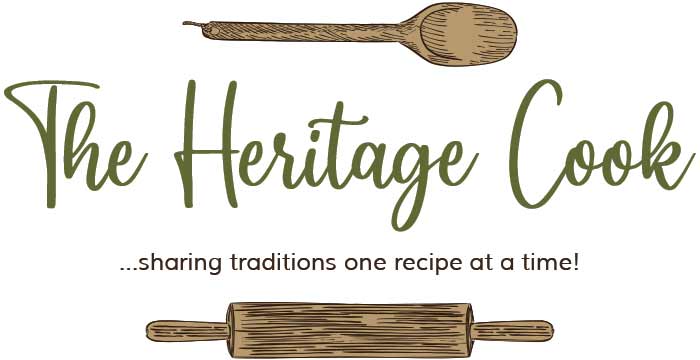

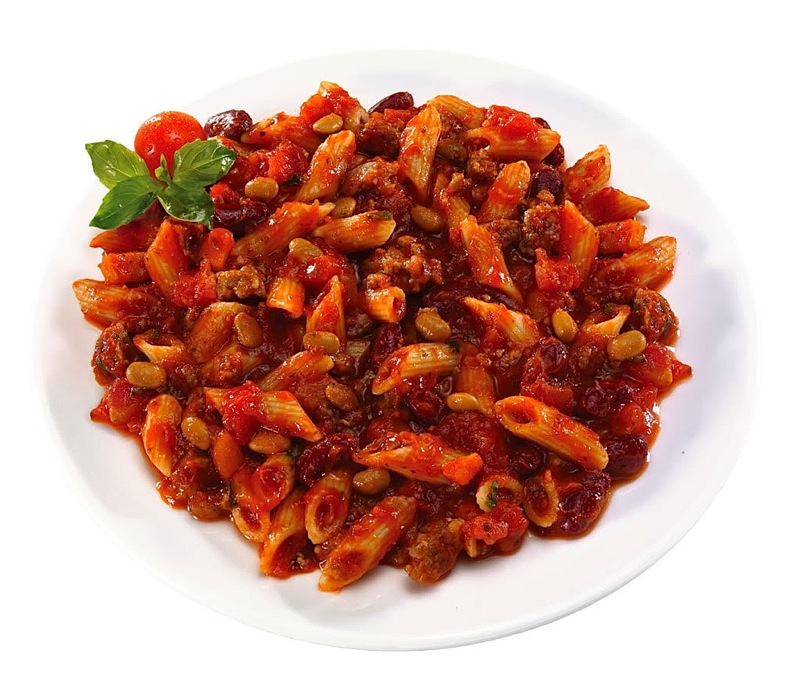
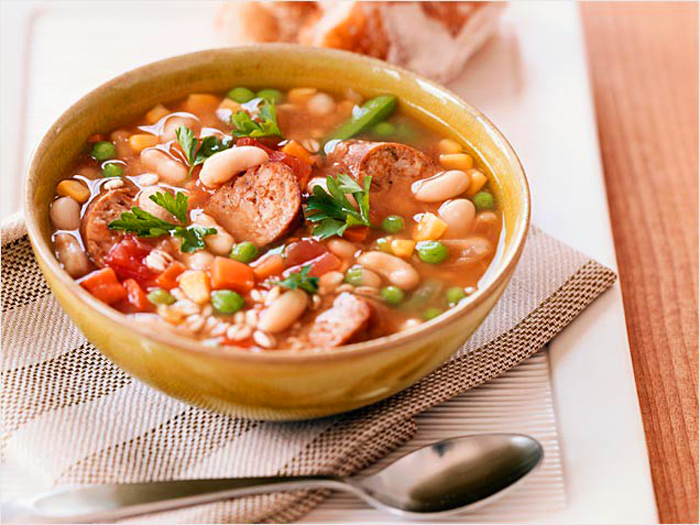

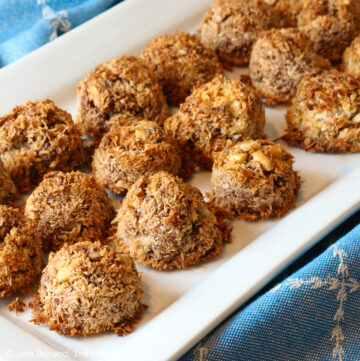
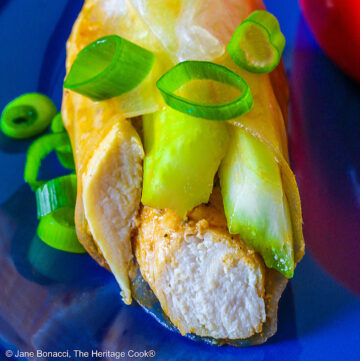


Marie
My family is from Moleze and they always called it Pasta Fazooo!!! No L at the end, but three or four “exclamation marks.” 🙂 It’s a wonderful and beloved dish because it always brings up warm memories of family laughing at the table with their bowls of “Pasta Fazooo”!
Been on a real pasta fazoo kick of the past two weeks now and I swear I’ve lost five pounds, already. The only thing that bothers me about this dish is how much restaurants charge for just a small bowl. It’a a terrible thing, I think, as it cost almost nothing to make, tastes beautiful and will always make you smile. I think that’s why us Italians love it so much. Restaurants should charge next to nothing for it, and everyone will be smiling over their bowls of Pasta Fazoooo!
Suzanne Collier
Yes, Yes, Yes, YES! To all of them!
Jane Bonacci, The Heritage Cook
Oh Suzanne, I do love your enthusiasm!! ROFL!